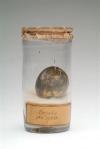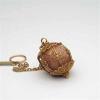In the Middle Ages, people believed that bezoar stones could neutralize poison, and they were used in medicines up until the 18th century. Important individuals often carried them, sometimes encased in gold or in a scented holder worn as a pendant.

A bezoar is a rare, stone-like formation found in the digestive tract of animals. The word 'bezoar' comes from the Persian 'pâdzahr,' meaning protection against poison. These remarkable stones were highly sought after in the past.

Arabic physicians used bezoars as early as the 8th century in their medicine. In the 16th century, the Portuguese took over the bezoar trade and introduced these medicinal stones to Europe, where they were included in medical books.
